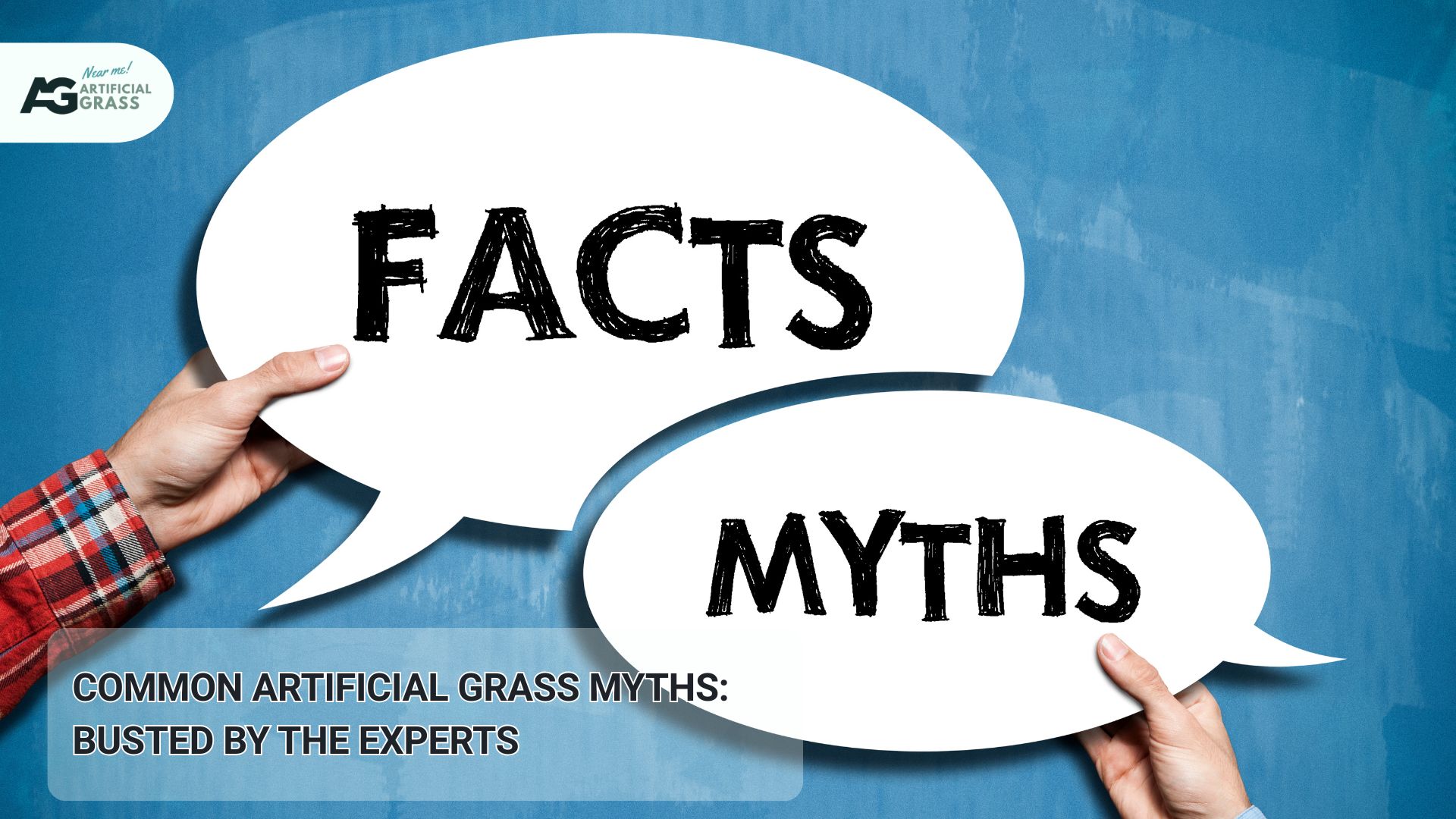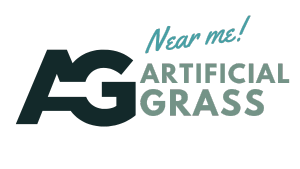
Artificial grass solves real problems, such as mud, mowing, and patchy growth, but it also attracts many myths. You’ll often hear that it looks fake, overheats, floods in rain, smells with pets, or isn’t safe for families. Much of this comes from poor installs or older, lower-grade products rather than today’s standards. In this guide, we separate fact from fiction with practical tips for UK homes and small sites. With the basics set, let’s start with the question most people ask first: how real does it look up close?
What myths do homeowners ask about most in the UK?
Most people worry about looks, heat, drainage, smells, weeds, safety, rules, lifespan, and cost. These doubts are common because buyers see mixed results online. This guide sorts fact from myth so you can plan a tidy, long-lasting lawn. Let’s begin with the one everyone raises first: how real it looks up close.
Does artificial grass still look fake up close?
Quality turf does not look fake up close when fibres, pile height, and seams are well chosen and fitted. Modern products use multi-tone fibres and a brown thatch layer to mimic real lawns. Ask to see local installs and view them in daylight. Once the look feels right, the next thing most families ask about is safety.
Is artificial grass safe for children and pets?
Yes, properly built certified turf is safe for families and pets. Choose products that comply with UK/EU chemical regulations and add a shock pad for play areas. Keep edges neat and follow a simple cleaning routine. With safety covered, it’s sensible to check whether any local rules apply before you plan the work.
Is artificial grass allowed by my council or in my lease?
It often is, but rules vary by area and building. Check deeds, covenants, and any estate guidance before work starts. Flats and managed sites may need written consent. Once permissions are clear, many people want to understand the wider environmental picture.
Is artificial grass bad for the environment?
It can reduce water use and mowing emissions, but the materials have a footprint. Pick UV-stable, durable products and ask about recyclable backing and end-of-life options. Keep live planting beds for wildlife. With the green basics in mind, comfort in warm weather is the next practical point.
How hot does artificial grass get and how can I keep it cooler?
Turf can warm in bright sun, but shade, rinsing, and cooling infill keep temperatures comfortable. Lighter colours reflect more light, and trees or sails help a lot. Simple footwear is sensible on very sunny days. Heat is one side of comfort; handling heavy rain is the other.
Does artificial grass drain properly in heavy rain?
Yes, when the base is free-draining and the lawn has a slight fall. Use compacted MOT Type 1 with fines, add a permeable layer, and set water routes to a gulley or soakaway. Solid edging prevents water traps. With drainage sorted, pet owners naturally ask how to prevent odours.
Will my lawn smell if my dog uses it? What prevents odours?
No, pet smells are avoidable with drainage, the right infill, and a rinse routine. A permeable base moves urine away, and zeolite infill binds ammonia. Enzyme cleaners help in busy spots. Keep that routine going, and you’ll also make it harder for wind-blown seeds to take hold, which reduces weed growth.
Can weeds grow through artificial grass or only at the edges?
Weeds rarely break through a membrane; most start from seeds on top. A geotextile layer, sealed edges, and light brushing keep growth down. Any odd sprout is easy to remove. Even with minimal weeds, a little care keeps the surface at its best, so it’s worth seeing what upkeep really means.
Is artificial grass really zero-maintenance?
No, it is low-maintenance rather than zero. Brush the pile, remove debris, and rinse pet areas when needed. Check seams and edges during seasonal tidy-ups. And speaking of seams, many buyers want to know how visible they will be when the job is done.
Will my seams show after installation?
They should not, if the grain is aligned and the join is made with proper tape and adhesive. Skilled trimming and weighting during cure keep the surface flat. Always ask to see a seam sample. After joining, attention turns to how the surface holds up under heavy foot traffic and furniture.
Will the surface fade, flatten, or mat in high-traffic areas?
Good fibres resist fading and recover well with brushing, but heavy footfall will press the pile. Use furniture pads and rotate items in busy spots. Choose denser turf for play zones and walkways. Around pools and wet areas, grip is the next point to consider.
Is artificial grass slippery when wet or near pools?
Quality turf keeps a good grip when clean and well-drained. Algae, soaps, or sunscreen can make any surface slick, so rinse and brush as part of care. Drainage mats are useful near the water’s edge. If your space is hard-standing rather than soil, you may be looking at balconies, roofs, or concrete next.
Can I lay turf on balconies, rooftops, or over concrete?
Yes, with drainage mats and secure edges, these areas work well. Add a shock pad for comfort, and check weight and access rules for your building. Use non-bonded layouts if you rent. On firm bases like these, the choice of infill becomes even more important.
Do I really need infill and which type is best?
Yes, infill supports fibres, adds ballast, and aids drainage. Kiln-dried silica sand is standard, zeolite helps with pet odour, and TPE/EPDM adds bounce for sport. Cooling infills can reduce surface warmth. The right infill also underpins speciality setups like putting greens and small sports zones.
Is artificial grass good for putting greens or small sports areas?
Yes, short, dense turf over a firm base gives a true roll and stable footing. Sand dressing lets you tune speed, and shock pads add comfort for multi-use. Design the zone around your main activity. With sports covered, some readers worry about pests and insects next.
Does turf attract bugs, mosquitoes, or other pests?
No, turf does not feed insects, and mosquitoes need standing water, not grass. Keep drains clear, remove leaf litter, and avoid puddles. Tidy edges discourage nesting. With pests addressed, the next question is how long a well-made lawn should last.
How long does premium turf last, and what factors affect its lifespan?
Well-made lawns last many years with light care. UV stability, density, and regular brushing help fibres keep their shape. Warranty terms signal expected performance. Longevity also affects how buyers perceive a home’s value when selling.
Will an artificial lawn help or hurt resale value?
A neat, natural-looking install can lift kerb appeal, while poor work can put buyers off. Keep living borders and choose realistic colours. Document the build, drainage, and warranty for future owners. After value, most households look at the long-term running costs.
Is artificial grass a smart financial choice over 5–10 years?
For many homes, it is, because running costs fall after the higher upfront spend. You save on watering, mowing, and many repairs. Keep receipts to compare real totals over time. To protect that investment, avoid the common mistakes that lead to failures.
What mistakes cause most failures, and how do I avoid them?
Thin or soft bases, poor drainage, poor seams, and the wrong infill are the main causes of issues. Specify base depth, membrane, edges, infill, and falls in writing. Inspect progress before the turf goes down. Good specification also means matching products to your local climate.
How should I choose turf for hot, coastal, or cold UK climates?
Match fibres and backing to your conditions and test samples outdoors. Hot spots benefit from cooling infill and shade; coastal sites need robust backing and secure edges; and cold zones need stable, well-compacted bases. UV-stable fibres suit all regions. The final step is picking an installer who can deliver these details.
What should I look for in a trustworthy installer?
Pick firms that show close-ups of seams and edges, share written specs, and offer clear warranties. Read recent reviews and confirm insurance. Make sure you get after-care guidance. With the facts and the right team in place, it’s clear which myths we’ve put to rest.
Myth-vs-fact recap: what did we actually bust?
Most myths about looks, heat, drainage, smells, weeds, and safety are dispelled by the right products and a proper build. Seams can be near-invisible, grip is good when clean, and weeds are rare with membranes and sealed edges. A long service life and decent resale value depend on quality and care. For homeowners interested in how to lay artificial grass like a pro, these facts show that success comes down to good preparation and attention to detail. With the myths cleared up, we can close with the key points for planning your lawn.
What’s the practical takeaway for UK homes and sites?
Choose a realistic, UV-stable product, plan drainage and edges, and pick infill for your use. Build a firm, permeable base with a slight fall and keep a simple brushing and cleaning routine. With sound specs, tidy work, and professional artificial grass installation, an artificial lawn stays clean, safe, and easy for years.
